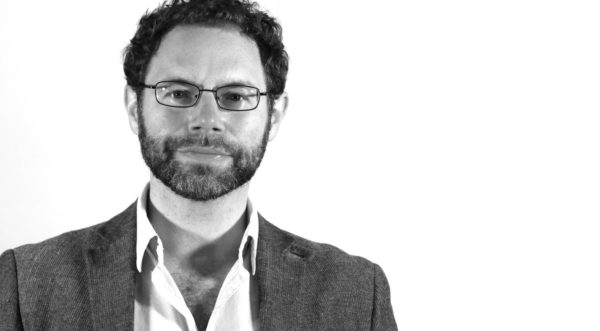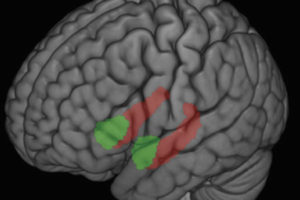Read the Tibetan translation of this piece, courtesy of Dr. Yangbum Gyal at UW Cultural Linguistics Services
Western medicine often considers the transition from life to death as if a switch is turned from “on” to “off” when a person’s heart stops beating and they stop breathing.
Yet as researchers around the globe study the process of dying and gain a deeper understanding of the cultural and religious context of death, labels of being “alive” or “dead” fail to capture the complex processes that many cultures and faiths believe actually exist on a continuum.
Center for Healthy Minds experts at the University of Wisconsin–Madison and Tibetan medical leaders at premiere medical institutions in India have published the first peer-reviewed paper on a phenomenon called “tukdam” in hopes of starting a conversation about the process of death and how future research may understand a person’s mental, spiritual, and physical well-being during the process of dying. Such conversations can also inform the ethics of practices such as organ harvesting after an individual has been pronounced clinically dead and supporting conditions for a peaceful transition in the dying process.
The paper, featured in the journal Frontiers of Psychology, observes Buddhist monks and long-term meditation practitioners who were determined to be in tukdam by experts in the community at field sites across India. The state of tukdam occurs when individuals’ bodies show a highly attenuated rate of decomposition after they have died, typically following a period of prolonged meditation during the dying process and a lifetime of meditative practice. In a Tibetan Buddhist context, an individual who achieves tukdam is considered to have lived a moral and ethical life. The state and observation of tukdam is considered sacred by Tibetans, and it is especially impactful for those close to the individual experiencing it. Tukdam likewise indicates a high state of spiritual achievement. It also is thought to be indicative of the likelihood for that individual to bring great benefit to the world in their next reincarnation, according to the Tibetan Buddhist faith.
"If scientists are able to provide evidence of those who are in tukdam, there will be greater attention among the youth to Buddhism and a regeneration of confidence, faith and joyous effort for Buddhist practice. I hope that it will also provide an even greater exemplar of what a mind filled with peaceful joy and ease looks like for our society."
The study is the first to describe the phenomenon in Western scientific, medical and forensic literature that measures whether individuals in tukdam display brain activity that could be measured during the postmortem period, in the hours after medical death occurs.
“In terms of the significance to Tibetan society, if scientists are able to provide evidence of those who are in tukdam, there will be greater attention among the youth to Buddhism and a regeneration of confidence, faith and joyous effort for Buddhist practice,” says Dr. Tsewang Tamdin, Chairman of the High Level Medical & Astrological Council at Men-Tsee-Khang (Sowa-Rigpa) Institute, the principal Tibetan medical establishment in India, who collaborated in the research. “I hope that it will also provide an even greater exemplar of what a mind filled with peaceful joy and ease looks like for our society.”

Dylan Lott, anthropologist and first author on the paper who conducted the research as a postdoctoral scholar at the Center for Healthy Minds, says previous studies measuring brain activity through tools such as electroencephalography (EEG) while people are meditating can produce a unique signature, so the thinking is that if someone is meditating in the time up until death, there may also be a unique or residual neural signature. This is supported by studies in animals and humans that report measurable residual brain activity in the first several minutes after clinical death when the heart stops beating and breathing ceases, implying that there may be some level of awareness or consciousness after clinical death.
While the team did not observe measurable EEG activity in the 13 cases of tukdam featured in the study, it is important to note that the earliest recording occured 26 hours postmortem. Lott explained that the findings don’t necessarily rule out that brain activity wasn’t occurring, but that it may have happened earlier and by the time researchers measured it, it was too late. He says the field conditions in India and the time traveled to get to each location, were a limiting factor in the data collection.
"It’s also important to build trust and relationships with tukdam practitioners and their students, given that the moment of death is for them a unique opportunity to achieve enlightenment and liberation. We have been immensely careful to not infringe upon that opportunity."
“It could be that the equipment that we’re using isn’t sensitive enough,” Lott says. “It’s also important to build trust and relationships with tukdam practitioners and their students, given that the moment of death is for them a unique opportunity to achieve enlightenment and liberation. We have been immensely careful to not infringe upon that opportunity. Consequently, permissions to study the deceased individual are received days after clinical death instead of minutes or hours, which would be ideal.”
The project is the first to report observations of tukdam in a systematic way in a peer-reviewed journal. Dr. Tsetan Dorji Sadutshang, the chief medical officer at the Delek Hospital in Dharamsala, contributed to the research and advised the group.
“The individuals who I felt confident to be in [a] tukdam state were persons whose body showed absolutely no signs of decomposition even after a week,” he says. “This was the most reliable sign and there are very few such cases… Those truly in tukdam retained the radiance to their skin, particularly of the face. These persons compared to persons not in tukdam were undoubtedly very serious practitioners of the Dharma and there were many people to vouch for that.”
"We hope this research catalyzes a conversation around the process of dying and raises questions about dying as a process and not a binary switch."
The project’s roots come from decades-long collaborations with His Holiness the Dalai Lama, who has challenged Richard Davidson, director of the Center for Healthy Minds and the William James and Vilas Professor of Psychology and Psychiatry, and scientists to understand the mind, and apply the rigors of science to the phenomenon of tukdam.
“In Western medicine, death is conceptualized in a binary state – either you’re alive in one moment or dead in another,” says Davidson. “Yet biological processes don’t work in a simple on-off way. They are more graded. We hope this research catalyzes a conversation around the process of dying and raises questions about dying as a process and not a binary switch.”
The team plans on continued collaboration and engaging both male and female Tibetan Buddhist practitioners to understand their experiences and well-being as they age at field sites in India and Nepal.
-Marianne Spoon






